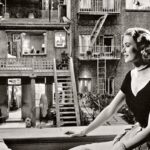
A Literary Dictionary of the Mothers Who Leave
L. Sasha Gora on “The Abandoners,” “The Price of Salt,” and the Stray Mothers of Literature
Abandon is a relational term, always requiring a party of, at least, two. But the conditions of this relationship—the small print and the large—differ in narrative power. It is the abandoner who defines the abandoned, never the other way around, and yet both need each other for these terms to stick.
Begoña Gómez Urzaiz, a Barcelona-based journalist, writes about abandoners, more specifically mothers—both real and imagined—who leave. The Abandoners her title calls them. Subtitled On Mothers and Monsters, her first book was published in Spanish in 2022 and translated into English by Lizzie Davis in 2024.
Gómez Urzaiz gets straight to the point. “What Kind of Mother Abandons Her Child?” the opening chapter asks. The question—as heavy as the topic it takes on—has seized her again and again. It’s a question she can’t resist, as if she’s “possessed by a moralist” she doesn’t believe she is, an identity that makes her itch.
A movie is, in part, to blame: Carol, the 2015 film spun from Patricia Highsmith’s 1952 novel The Price of Salt. Despite her fatigue from going overboard on her first son’s birthday—an example of “maternal-affective overproduction”—Gómez Urzaiz takes up an invitation from friends to tag along to the theatre.
Without a pinch of ambivalence, Carol abandons her husband and, therefore, daughter, to live as she loves. Carol took home “the first lesbian novel with a happy ending” prize, but Gómez Urzaiz can’t help but object. “If she never sees her daughter again. How can that ending be happy,” she asserts. Disobeying the feminism she practices and preaches, she admits “that it wasn’t the first time that judgmental spring had gone off.” A spring that her book attempts to locate a source for.
I am the daughter of a Carol. The details differ—three kids instead of one, the eldest, which is my role, from a previous marriage, a Canadian suburb, perhaps even chillier than Carol’s in New Jersey, left behind for Texas’s wide open landscape instead of Manhattan’s vivacious verticality—but the short version reads the same. A mother leaves a man and a child (or three) for a (slightly) younger woman.
The math that governs this equation adheres to two rules. When a mother leaves, the father and child become a two-for-one deal. The child may not follow. But when the father leaves, the answer is whatever he wants it to be. Standards that are as durable as they are double.
Western societies have historically sentenced women to the passive tense. Women are tethered to nature, rooted, while men free their feet from the ground, wander off and create culture. Motherhood, however, shoots an arrow into the heart of this myth. What can be more powerful than growing a body with your body and then keeping it alive? Because women are assigned to nature, this power must be confined, controlled, constricted to a time and a place.
The Abandoners is a sightseeing tour of negligent mothers, bad mothers, some part-time and others full. Not “good bad” but “bad bad” mothers. As its guide Gómez Urzaiz admits that “according to the rules of modern writing,” she’s “not entirely authorised to write” this book. Her parents did not abandon her, nor did she abandon her children. Instead, she assumes the position of a spy—a self-declared outsider with strong binoculars.
When a mother leaves, the father and child become a two-for-one deal. The child may not follow. But when the father leaves, the answer is whatever he wants it to be. Standards that are as durable as they are double.
I may have a front row seat, but I still wonder if these rules permit me to draft a response. Can I write this if I myself am not a mother? Sure, I’m a card-carrying member of the daughters-whose-mothers-left club, but I’ve never been a mother, either by body or by name. Caring for young children, Gómez Urzaiz describes, is “like renting out your own body.” My body has only ever been mine.
But literature’s superpower is that it is a projector as much as it is a mirror. It brings you back to the places you know best and it beams you to worlds you never knew existed.
Gómez Urzaiz calls on her training as a journalist, employing a why, when, and how approach to her collection of real and fictional women. Plucking examples from film and literature, the cast in The Abandoners is exceptional. Ingrid Bergman and Doris Lessing. Muriel Spark and Mèrce Rodereda, a Catalan writer whose biography rhymes with Spark’s with the exception of the horrific term “uncle-husband.” There are the “stray creatures” of Henrik Ibsen’s Nora Helmer in A Doll’s House and Leo Tolstoy’s Anna Karenina. (Tucked into this chapter is also the miracle of translation: If the former is “concise and compressed” then the latter is “torrential, tumultuous.”) There’s Joni Mitchell—who sang about giving up her daughter for adoption—and her contemporary Vashti Bunyan whose lyrics you probably can’t recite because she stopped making music to raise her baby.
Gómez Urzaiz also reaches for material from her life. Moments where she has judged other mothers, moments when other mothers have judged her. The chapter “Artisanal Motherhood” keeps score, turning parenting into a game, a competition, an equation to balance, a showdown in guilt.
But what about mothers whose careers are less shiny? The book’s subtitle could have been On Mothers and Monsters and Money. Her more “ordinary” examples have turned motherhood into an industry, the age of momfluencers and “the economy of turbomotherhood.” This makes her penultimate chapter the most common of the bunch. Here “involuntary abandoners” claim the spotlight. The book wouldn’t have been complete without them and so to write the chapter that “doesn’t fit, the one that doesn’t talk about writers or actors or famous pedagogues,” she interviewed “migrant women” in Spain. The irony is that some left their progeny only to take care of other people’s.
Abandonment, however, is not a synonym for separation. As Gómez Urzaiz posits, “It was clear to me that the mothers with an ocean between them and their children are anything but abandoners.” Here five women speak for themselves, their stories as they tell them, and this is why the chapter doesn’t fit. Not because of its content but because of its style. Isn’t leaving a child to pursue opportunities elsewhere similar to Spark and Lessing? And why not tell these stories together instead of segregating them?
This also asks: How elastic is the word abandon? To what extent can it span the emotional and the physical, the temporal and the permanent? Gómez Urzaiz uses abandon loosely, too loosely. As she nears her conclusion, she reflects on how writing about abandoners required her to “abandon” her “own children more than usual.” But maybe this is also a difference in language. As she details, “Spanish lacks a word as precise and moving as the one used in English ‘estranged children’, children who have become strangers.”
In The Abandoners a child executes a clean cut between before and after. Before Gómez Urzaiz became a mother, her neighborhood was flat. And then after, it took the weight of an old pram for her to notice that “it’s all uphill.” While pushing it for seventeen minutes with good luck with the traffic lights, twenty-one without, the skirt that’s tied around her waist and spotted with leopard, twenty-five euro from Oysho, makes her notice other “leopard mothers.”
Twice a day, there and back, back and there, she takes inventory of similar skirts from fast fashion empires: “It was a skirt that, worn at that moment, said: ‘I haven’t entirely abandoned who I was, I’m making an effort to look like my old self.’ And at the same time: ‘I only have twenty-five euros for nonessentials, you better not look at my eyebrows, my new hips and I are still getting to know each other … a skirt that can compromise, shape-giving but not too tight, offering the spirit of consensus in the battle raging between who you used to be and who you are.” A skirt that forgives. A skirt that takes you as you are.
I consider leopard print a neutral, which is to say that I wear it like other people wear stripes. I even pair it with stripes. The day I finished reading The Abandoners I had thrown on my leopard print trousers made from a velour so thick I could probably call on them as a backup sleeping bag. The kind of fabric that late night infomercials try to sell you in the guise of a blanket with sleeves, in this case, a blanket with legs.
Trousers as forgiving as they are quiet, as in not at all. They bunch at the hips, promising all bark where there’s no bite, making me wonder about an alternative before and after. Since my mother left after I turned thirteen our whole relationship has been an after. And never becoming a mother myself, as I get close enough to forty that I don’t need my glasses to see it, I wonder if I’m still living in some sort of before.
As I finish writing this I once again dress in leopard. This time in a cotton, button up I thrifted two decades ago in Montreal for three dollars. A top that has dressed and decorated and shielded me through multiple seasons of life. A top that makes me wonder what happens if we take a few steps back, if we turn our gaze from the vertical to the horizontal.
“Almost all of us see our mothers from such a close distance that we can barely make out their contours,” writes Gómez Urzaiz. What happens if, instead, we see motherhood not as a portrait, but as a landscape?
Leopard print celebrates the wild, animals gone wild, animals that have never not been wild. Gómez Urzaiz excuses herself from a clean conclusion, admitting that she can’t claim to now better understand her abandoners. “I always understood them – how could I not have,” she clarifies. And yet she still fashions a tidy closing, circling back to Carol, which she now sees “not as a happy ending, but as an attempt at happiness.” An ending where a daughter no longer needs her mother to take care of her, but to just be there. “Still imperfect, but within reach.”
The Abandoners includes mothers who return, who unabandon. To leave, after all, is not always an ending. A rupture, a pause, an interruption, sure—but not the end. Like to abandon, it’s relational and, at least in theory, must contain the potential to reach out, to return.
L. Sasha Gora
L. Sasha Gora is an essayist and cultural historian who writes about food, the environment, and art. Her first book, Culinary Claims: Indigenous Restaurant Politics in Canada, was published by the University of Toronto Press in March 2025.



















